Antique lamps are simply beautiful. Their classic look can transform any room they stand in.
Sought after by antique collectors and interior decorators alike, these simple, ornate lamps can fetch a small fortune at auction. So if you have an old lamp sitting on your desk, you might want to take a closer look at it!
Today we’re going to explain how you can identify your antique lamp. From identifying its style and make to dating it, valuing it, and much more.
Table of Contents
What is an antique lamp?
Firstly, there’s something we have to clear up from the offset.
Nowadays we often use antique and vintage hand-in-hand. But we must make a distinction between the two when lamps are concerned.
- Antique lamps are older than 100 years.
- Vintage lamps are younger than 100 years but older than 20.
Antique lamps can date as early as the 17th century. They come in a huge variety of different shapes, styles, materials, and fuel types. Vintage lamps are often solely electric and have a more modern design.
How do I identify an antique lamp?
As with all antiques, there are several features of antique lamps which can help you identify their age, manufacturer, and if they are genuine antiques, vintage, or reproductions.
Here are some easy ways of identification:
Lamp Maker’s Mark
An antique maker’s mark is a logo, sign, or sticker that tells us who made the antique. Marks can be a stamp or embedded into the base.
If the base has felt on it, gently lift it to examine underneath. Marks can be incredibly small, so we recommend using a magnifying glass.
Tiffany glass lamps have a maker’s mark that reads ‘Tiffany Studios New York’ on their base to verify their authenticity. Without the maker’s mark, it could potentially be a reproduction.
Some of the most popular manufacturers with maker marks include:
- Duffner and Kimberly
- Hubbard
- Bradley
- Fulper
An antique or vintage lamp?
If you can find out the manufacturer, you should be able to identify what years the company was active. This can tell you if the lamp is an antique, or vintage piece.
E.g. Tiffany glass lamps fell out of popularity in 1913 and ceased production. This means any verified Tiffany isp is a bonafide antique because it is older than 100 years.
In contrast, popular lamp maker the Emeralite Company was founded in 1939. This places their lamps in the vintage category because they are not old enough. Sadly many collectors assume they’re antiques.
Fuel design
One of the key things about an antique lamp is its fuel design.
Early lamps: these lamps used kerosene or paraffin oil as a fuel source.
They had chambers to store liquids and catch any spillages. These lamps are unquestionably antique due to their ancient design.
Electric lamps: things can get trickier in identifying antique electric lamps because they can often be similar to modern-day lamps.
Electric lamps usually date from the 1860s onwards. Initially, batteries were very expensive, so they didn’t become mainstream until much later on. There are two main areas to examine to verify if your lamp is an antique (over 100 years), vintage (older than 20), or a modern reproduction: the cord and the plug.
- Lamp cord
If you have an antique electric lamp, there are some ways to date it, too. First, examine the cord. Screws and exposed wires where the cord connects are a common feature of old lamps.
Lamp makers used cotton-wrapped cords and prongs that were all the same size up until the early 20th century. However, it’s important to highlight that cords are often the first thing replaced or restored in a lamp. Many people mistake exposed wires as a flaw and unwisely cover them up!
- Lamp plug
The condition and type of your lamp’s plug can also help pinpoint its original production date. Old lamps often had the same-sized prongs, while modern lamps have one bigger prong.
Plugs can be repaired, restored, or completely revamped. If in doubt, check reference guides or pictures of similar models to your lamp.
Manufacturers and styles of lamps were often very consistent throughout the years, making it easier to spot changes in antiques.
The different types of antique lamp
There are many different types of lamps out there, and putting them into categories is a very useful way of figuring out their overall value.
Some look incredibly old and historical – others can be very deceiving looking about their true age. Let’s take a quick look at some of the most common antique lamps on the market:
Kerosene Lamps
Kerosene lamps were first invented in the 1890s and are often nicknamed’ the student lamp’.
Kerosene lamps gave out a soft glow of light that was perfect for late-night reading. It had a separate tank of kerosene and a swing that acted as a handle.
Kerosene lamps’ prices vary. Take for example:
- This 1857 brass kerosene lamp is worth $35
- This clear kerosene lamp with chimney is worth $113
Tiffany lamps
Tiffany lamps are some of the iconic, sought-after lamps in history. First made in the 1890s, they were reserved only for upper-class families who could afford the brand.
You can spot a Tiffany lamp easily because of its signature stained-glass shade. Most lamps date to around the 1900s.
Value depends both on condition and the style of the shade. Examples include:
- This Watercolor Tiffany lamp is worth $325
- This green & blue Tiffany glass lamp is worth $4,635.
- This 1910 Tiffany lamp is worth $145,000.
Argand lamp
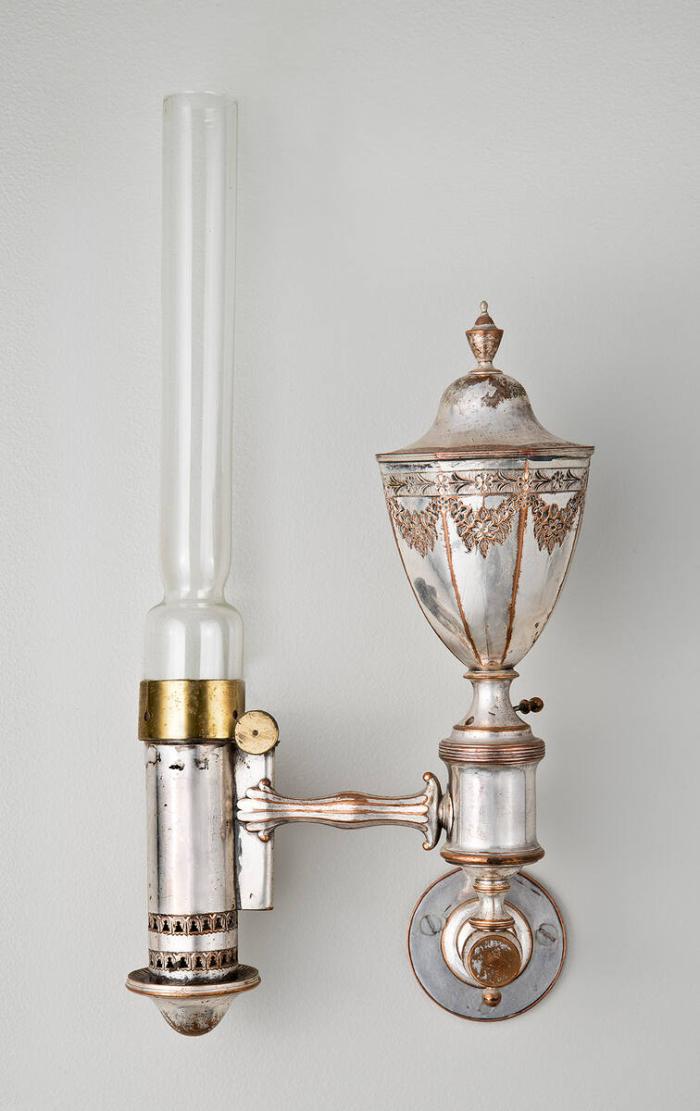
Argand lamps first appeared in the 1780s, and soon became the most popular lamps of the era. They shone brightly and required less maintenance.
You can spot an argand lamp easily by its signature sleeve-shaped wick mount, and an oil reservoir just above the burner.
Argand lamps generally date from the early 1800s and are particularly valuable to historical antique collectors. Expect prices to range from:
- This 1820s Argand lamp is worth $885
- These 1820s Argand lamps are worth $1,075 together.
Astral lamp
Astral lamps were an upgraded version of argand lamps. The most striking change is the lamp’s column, which is much longer and thinner. The oil lamp reservoir was hidden inside.
The columns were made of brass and bronze, which allowed for more detail and decoration in the lamp. Coincidently, it raised the value of the lamps too, e.g.
- This Victorian Sinumbra Astral lamp is worth $1,650
- This American classical bronze Astral lamp is worth $1,495
Betty Lamp
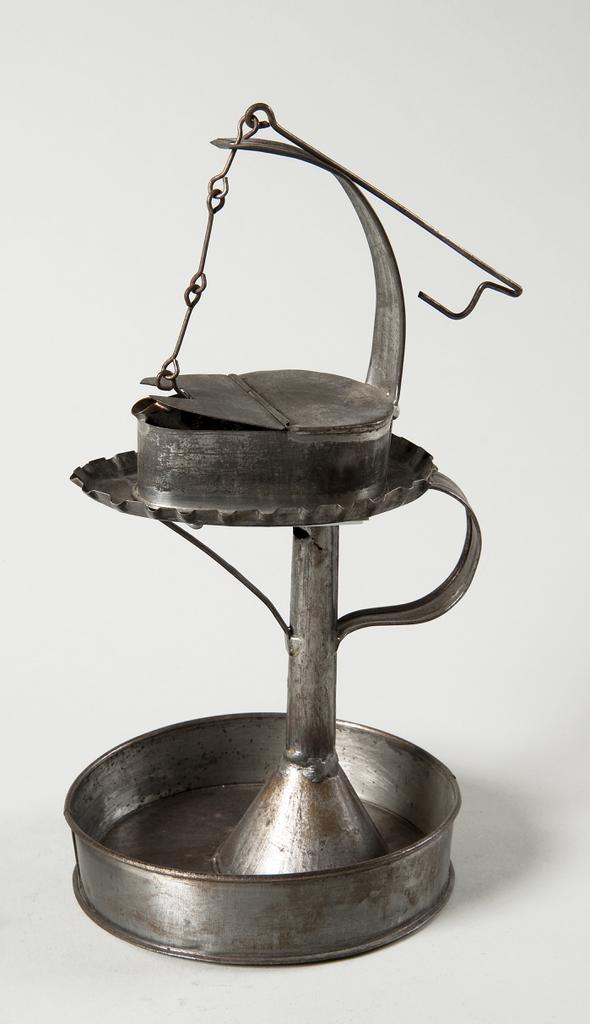
Betty lamps are simple-looking antique lamps that range in value depending on their condition and materials.
Also known as cruise lamps, they were invented in the 1700s and were popular for catching spilling oil from dripping wicks.
Examples include
- This 18th-century is worth $19.99
- This cast-iron betty lamp is worth $90
- This metal ironwork betty lamp is worth $500
Banquet Lamps
These are the ou-la-la lamps we often think of in Victorian high society.
Popular during the late 19th century, banquet lamps were often tall, slender lamps with globe-shaped shades. Colors often were soft and two-toned or milky white to cast the light softly.
They’re known for their decorative stem, ‘vase’ shape, and removable fount. Values range from:
- This Pink Bristol banquet lamp is worth $446
- This 1890s banquet lamp is worth $850
- This 1860s Boston sandwich banquet lamp is worth $16,985
What affects the value of antique lamps?
Now that you’ve identified what antique lamp you have, it’s time to see what might affect its final value. Consider these factors:
Condition
As with many antiques, the better condition it is in the more valuable it becomes.
Using a magnifying glass, you should check for any damages to your lamp, including:
- Minor scratches and scuff marks,
- Chips & hairline cracks,
- Damage to the manufacturer label
Like the base, the lamp’s shade should also be in pristine condition. It should still retain its original color and suffer no cracks.
If your lamp is electric, check to see that it can turn on. It’s often acceptable to repair circuits to ensure the lamp turns on.
Materials
The materials used to make your antique lamp can tell you not only the date it was likely made, but also Appearances can be deceiving though. It was common for antique lamps to be painted in different colors to imitate more expensive materials.
Some examples include brown sheens used to imitate copper, or chrome colors to imitate silver. You can check the authenticity of your lamp by rubbing the bottom of the lamp very gently. Pick a spot hidden from plain sight so as not to accidentally cause scuff marks.
Accessories
What is a lamp without a bulb? Quite often we forget about this very important feature. Granted, not many antique lamps will come with an original bulb – but if it does, it can be sure to fetch a small fortune at auction.
Both Edison and Weston bulbs can go for thousands of dollars on their own. Paired with a genuine antique lamp, they can be considered priceless.
Authentic maker’s marks
Like any luxury item, certain brands, manufacturers, and styles fetch considerably more at auction than others. A lot of this can depend on market demand. Given our huge interest in Victorian periods, banquet lamps and astral lamps have become very popular in popular culture, TV, and film.
Expensive brands like Handel lamps almost all lamps have a maker’s mark cast on the upper metal ring of the lampshade.
Essentially if you’re going to claim your antique lamp is a specific type or brand, do your homework and ensure you can verify your claims.
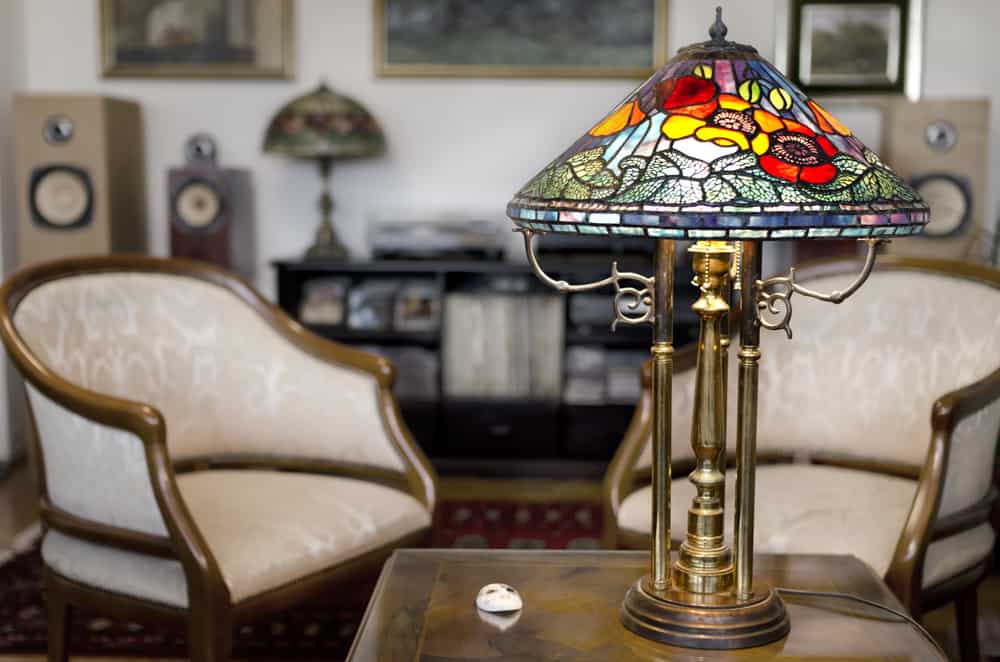
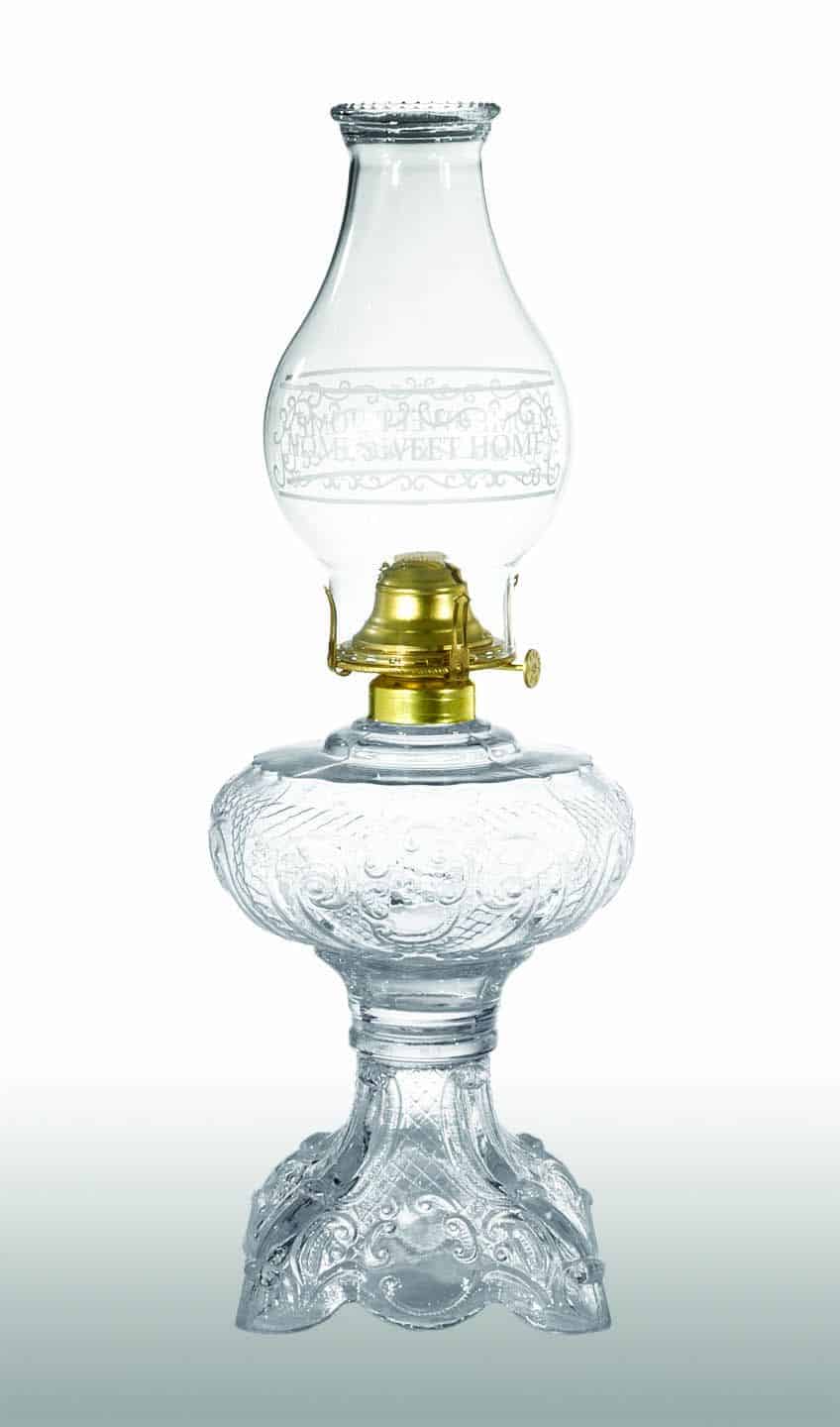
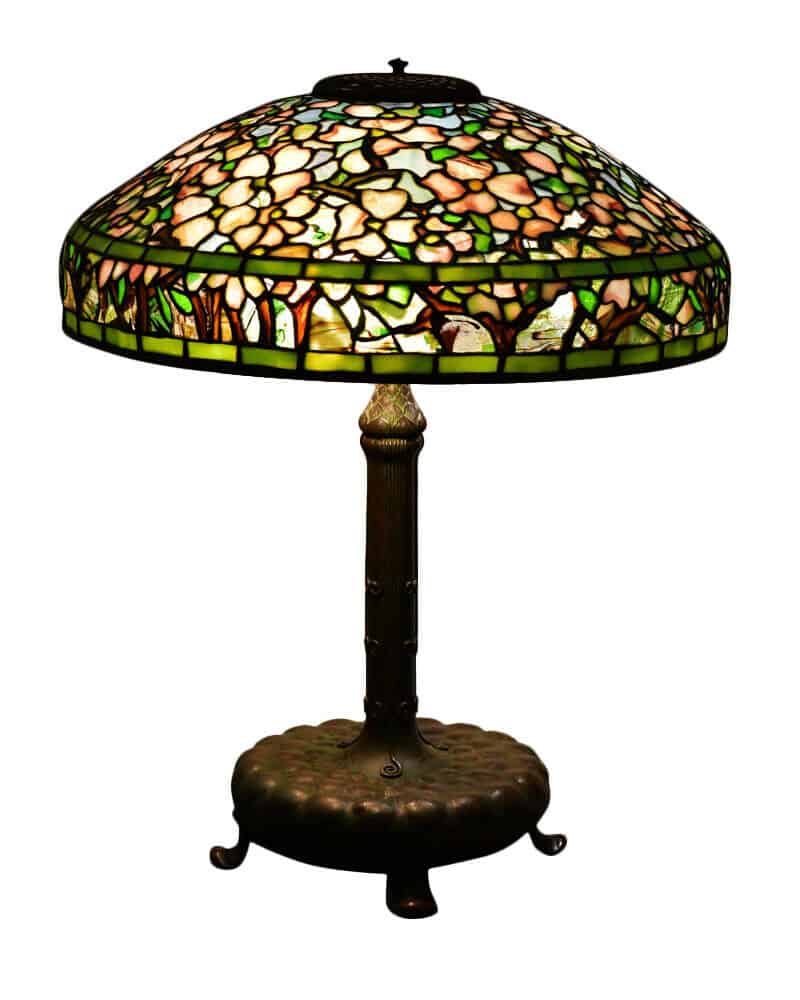
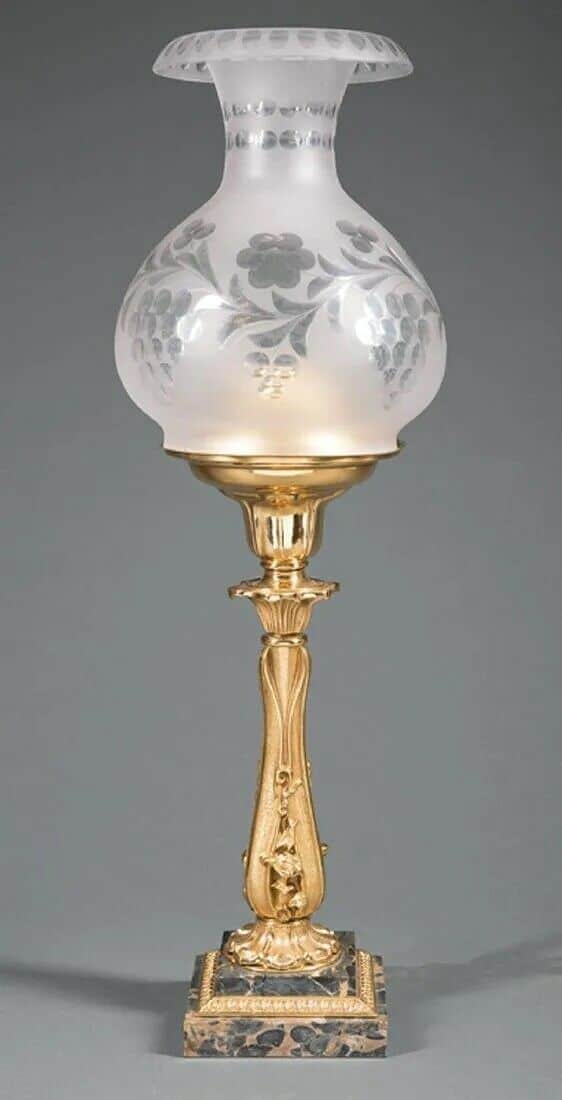
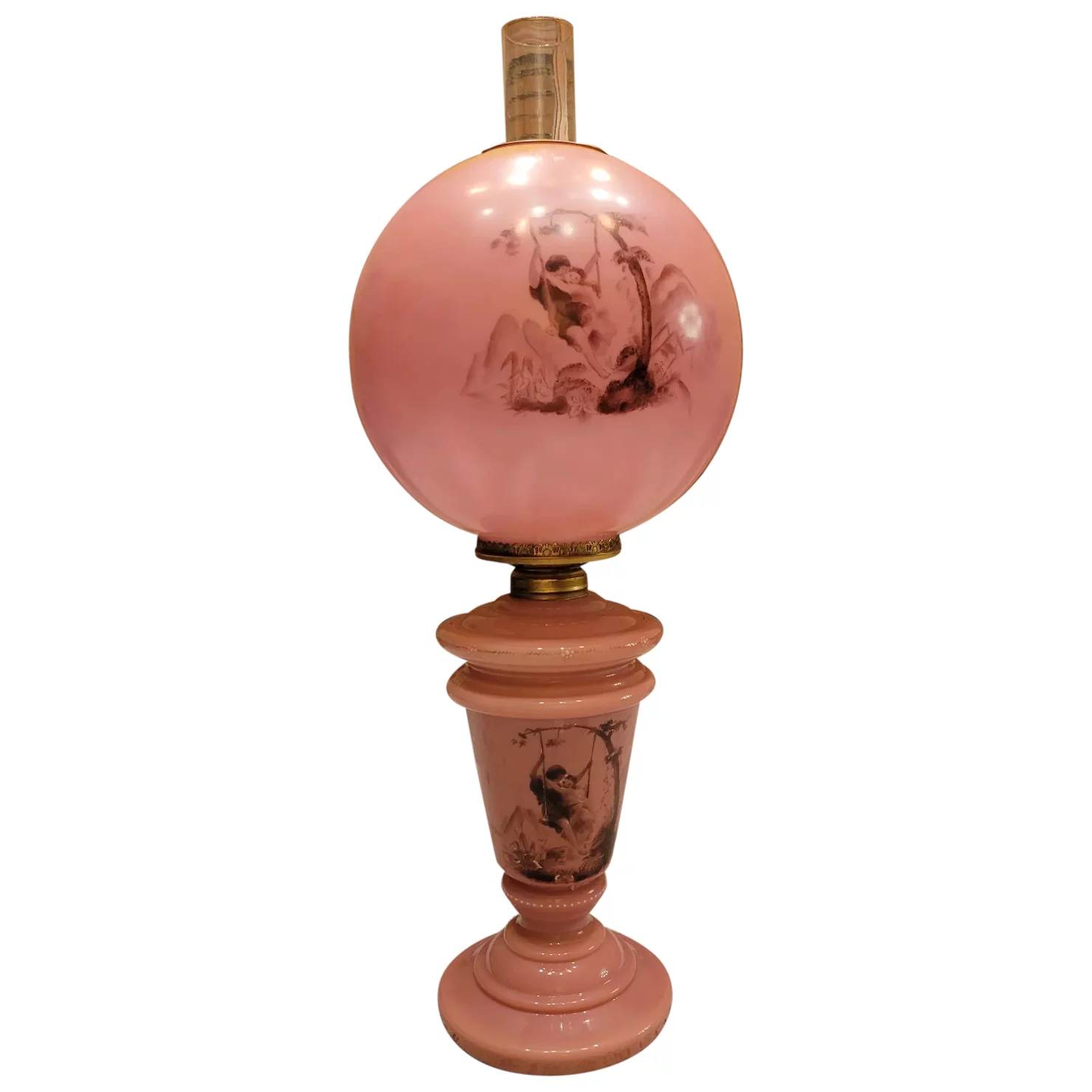
At the bottom of my kerosene lamp it has a number starting with the letters VO . It is over a 100 years old and belonged to my great- grandmother
My lamp isn’t one that sits on a table the one I’m trying to identify is pendant lamps that hang from the ceiling. The lampshades are too large egg shaped opaque white pieces of glass in the way they come off is by lifting it up and just pushing the whole plate inside to the angle and lifting it out. Very simple and easy design. The plug also has two identical size prongs. And the wires are twisted inside there and screwed. I can see that because the pieces missing that goes on the outside between the prongs in the wall. Any help would be greatly appreciated. Thank you in advance for anything you can do to leave me in the right direction.